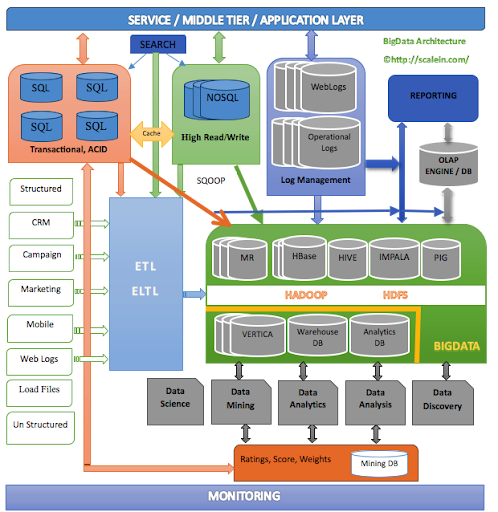Any data architecture loosely consists of four major logical components:
“任何数据架构由主要的四个逻辑组件组成:”
I don’t think there’s a blueprint for big data architectures. But such a diagram can give you a could idea of the possible components involved. Then to make things simple for engineers, you start adding requirements, constraints, and SLAs at each level. Once you have some sort of idea of how things will look, you start building it and discover that some of the components you are planning to use don’t work well together or there’s no way to achieve those SLAs. All in all, it’s a fun job.
“我不认为这是一个大数据架构的蓝图。但这样一个图能给你一个关于可能包含的组件的大致的想法。然后对工程师让事情变得简单,你开始在每个等级上添加需求,约束,和服务等级协议(SLAS Service-level agreement)。一旦你有了关于事情该怎么看的某种想法,你开始建立它并发现你将用到的一些组件不能很好的在一起工作,或者根本没有办法达到这些服务等级协议。总之,这是一项有趣的工作。”
My english is not very well,but I will try my best to translate it. Dont't hesitate to point out if there is some problem in my word,thank you !






















 564
564

 被折叠的 条评论
为什么被折叠?
被折叠的 条评论
为什么被折叠?








